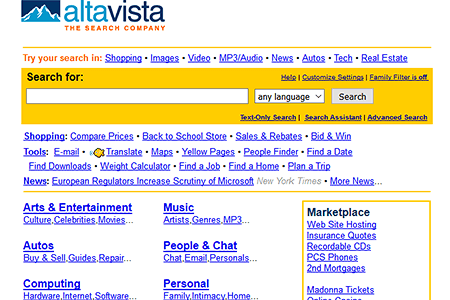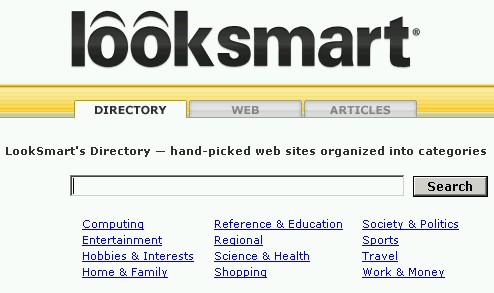Business Web directories, and web directories in general, represent an approach of organizing websites into categories. These can include business web directories or simply directories for websites for easier navigation.
The rise and fall of web directories
In the history of web directories, the 90s were the golden age. Almost all of the major websites back then: Yahoo, Altavista, looksmart had this web directory organization. Of course they also had the search features as well. But apparently this directory feature was essential, especially for business web directories.



Then came Google! With a much simpler search interface, there was just the search box. No directories! This new search method took the world by storm. Soon enough, Google was the major way of finding the information over the internet. Indeed, Google became a word that means finding information over the internet. However, where did the directories go?
The emergence of Google
It was obvious that major web companies just crumbled against Google. They could not compete against the effectiveness and simplicity of the new approach. The companies either went out of business, or changed their focus. However, one particular directory lingered a little longer.
DMOZ – a comprehensive web directory
This directory is dmoz, claimed to be the largest and most comprehensive web directory. Its stated goal was in its hashtag #OrganizeTheWeb. It has achieved a remarkable collection of websites. The websites spanned many domains and languages. This web directory had its own editorial system and guidelines to ensure the quality of the content. After 18 years, dmoz shut down, but it kept the directory online as an archive.
Why did web directories die?
So, the question now is: why were these directories dead? The simple answer can be that “because of google”, however, it can be trickier than this. One important criteria for a directory is the ability to easily navigate to the information needed. However, how can this be done? The assumption is that you can start by one of the major, top-level categories in the home page, and then go into further subcategories until you find the exact category you need. However, in many cases you wouldn’t know what is the exact category you want, or what its parent category is.
Also, in many cases, you may be looking for a category that can be classified under more than one parent category. Think, for example, of “horse”, can it be classified under “animals”, “farm animals”, “means of transportations”? It can be under either of these. Can web directories account for that? Or is it classified only under one category and not the others. There may be some optimizations for this, but it is indeed a difficult problem.
In addition, there is the common problem that you navigate all the way to a certain category, and you don’t find anything except very few results. Also, it can be frustrating when the classification system is not logical or reasonable.
Do we still need business web directories?
So, another question is: do we still need web directories? Even after Google has given us the power to search with keywords, and even do semantic search for concepts and structured data? It seems that the answer is yes. Google cannot, with its current algorithm, provide a listing of things. Indeed it lists its search results, ranked with its algorithm, but not a listing, like what you get when you click on any of the categories in a web directory. The only time Google can provide good listing is when it finds one of its search results to be actually a listing.
Having business directories is particularly important for business, because there are countless situations that only require a list of things. List of suppliers of this product, list of manufacturing companies, list of companies providing this particular service, and so on. This should not be confused with yellow pages, which can provide listings of some consumer-related businesses.
How would a practical, modern web directory look like?
Another important question is: even if a business directory is needed, how can it be properly structured? This is an important question, because there are countless classification systems. Even if the focus is on businesses and industries only, there are many of these. Therefore, an important starting point for building a sound web directory, is to make it based on a robust and a realistic business classification.
At KMatters, one of our important goals is to have an organized approach to managing business knowledge. Web business directories are one such important focus of ours. You may want to browse our AI-powered web directory B2Web (currently covering Australia and New Zealand, and soon covering more countries). You may also want to read more about our industry classification system Industry MAP ®. Subscribe to our newsletter below to get more information about our new activities, services, and products.